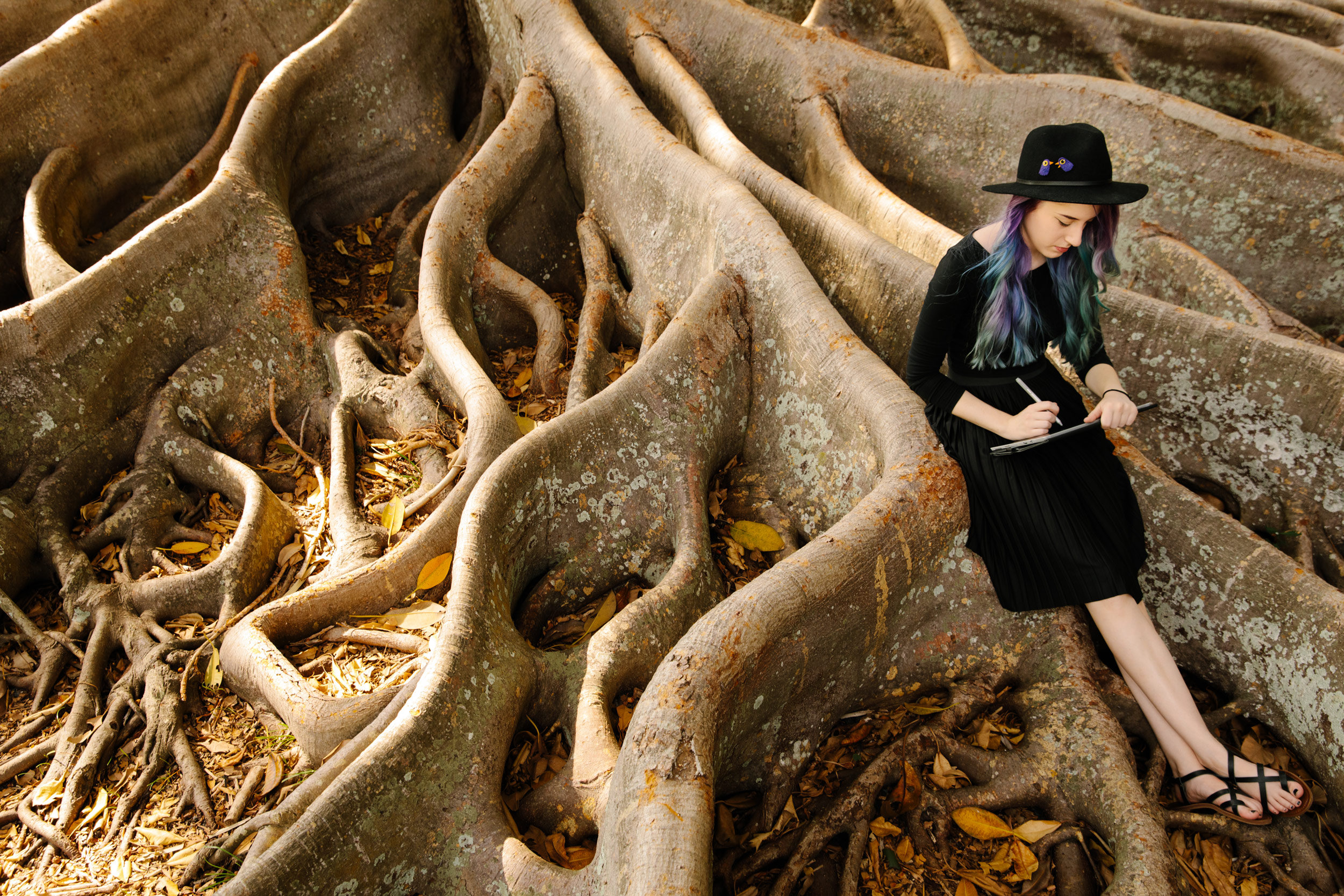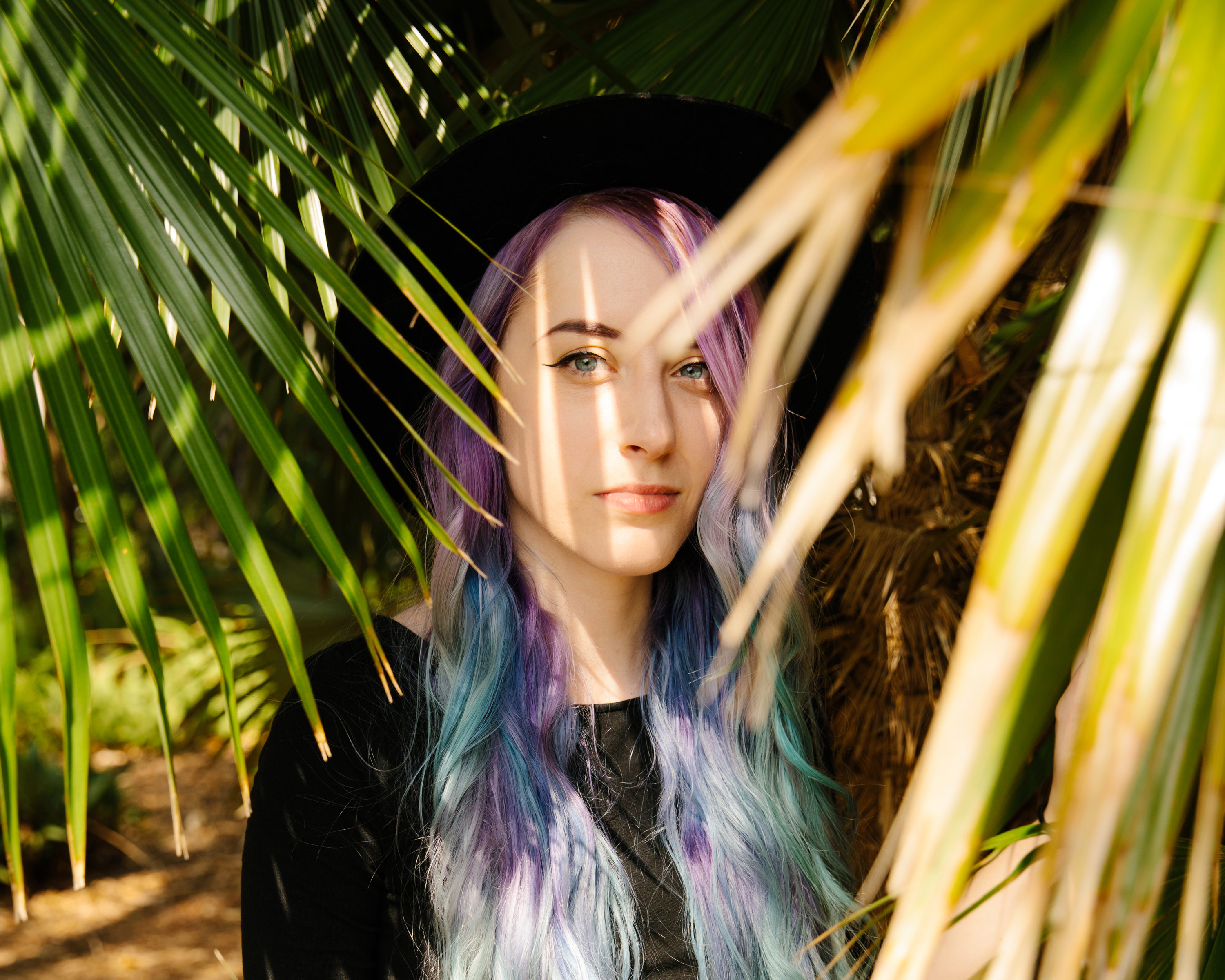
- Interview by Tammi Heneveld May 23, 2017
- Photo by Patrick Michael Chin
Syd Weiler
- illustrator
After her artwork went viral overnight, illustrator and Adobe Creative Resident, Syd Weiler, had to quickly learn how to navigate the positive and challenging aspects of online fame. Here, Syd recounts staying true to her creative identity throughout her college years, the joy of connecting to a global fanbase, and the importance of building a supportive online creative community.
This digital feature is in partnership with our friends at Adobe to highlight the Adobe Creative Residency, a program that empowers talented individuals to spend a year focusing on a passion project while sharing their experience and process with the creative community.
Was creativity part of your childhood in West Virginia? It was. I was very fortunate and privileged growing up because my parents recognized my interest in drawing early on and signed me up for private art classes. After high school, I went to Ringling College of Art and Design in Florida.
You initially studied animation, right? Yes, for two and a half years—until I failed out. (laughing)
What happened? The computer animation program there was intense and notoriously stressful. The professors expected so much from students. If our work wasn’t satisfactory, some professors suggested we sleep less in order to work more. In my opinion, it was an absolutely grueling and horrible working environment. Over the course of two and a half years, I felt myself deteriorating mentally and physically in an attempt to keep up with my classmates.
In addition to trying to stay on top of an incredible workload, I was essentially told that I wouldn’t be successful in a creative capacity because of my drawing style. We were learning 3D animation, so all of the associated drawing classes were focused on drawing in a style similar to what you’d see from Pixar or Dreamworks or Disney: rounded, form-based figures that could easily be translated to 3D rendering. I don’t draw that way instinctually. My work is flat, and I think in terms of shape more than form. But instead of being told to experiment with different styles or take a different approach to my drawing, I was told that I wasn’t good at drawing period. I knew in my gut that they were wrong. No one should ever be told that they’re bad at drawing; that’s not a thing! Everyone is good at drawing in their own way.
Concerns had been growing in the back of my mind for a couple semesters and the final straw came after a series of computer issues that set me way behind on a project. Over Thanksgiving break, I received an email that said I was either going to have to repeat the year or not come back.
How did you handle that? It was difficult. I didn’t want to fail. I didn’t want to be forced out in that way. I thought, “Fuck you guys. I’m going to go draw.” And I switched my major to illustration.
I then had to explain to my parents why I failed out and why, after almost three years, I changed my entire degree plan and career path. They had footed the bill for my school, and I had told them that I was doing fine the whole time, because why wouldn’t I? I was incredibly lucky that they were outwardly understanding and gave me permission, even though I think they were a little panicked and probably thought that art school was a mistake.
As soon as I started the illustration program, I put my nose to the grindstone. Unfortunately, leaving the animation program to study illustration was pretty taboo: people saw it as being weak and giving up, so I became ostracized from my friend group in the animation program. They didn’t want to be associated with me anymore, and I didn’t know anyone in my new major, so I sort of felt like a social pariah. It seemed like the only thing to do was throw myself into my work, so that’s what I did.
I took it all in stride and reminded myself that I had a lot of skills and had learned a lot up to that point. Luckily, I was thrown into an incredible painting class with a professor who understood what I was going through. She encouraged me to use my painting as an outlet. I was grateful to have her at that moment in my life. In addition, I also worked on an interactive game project called Jenny LeClue with a local developer group for about two years before it launched on Kickstarter in 2014. That project taught me a lot about marketing and branding, and the sheer amount of work, effort, and good luck it takes to make a project successful.
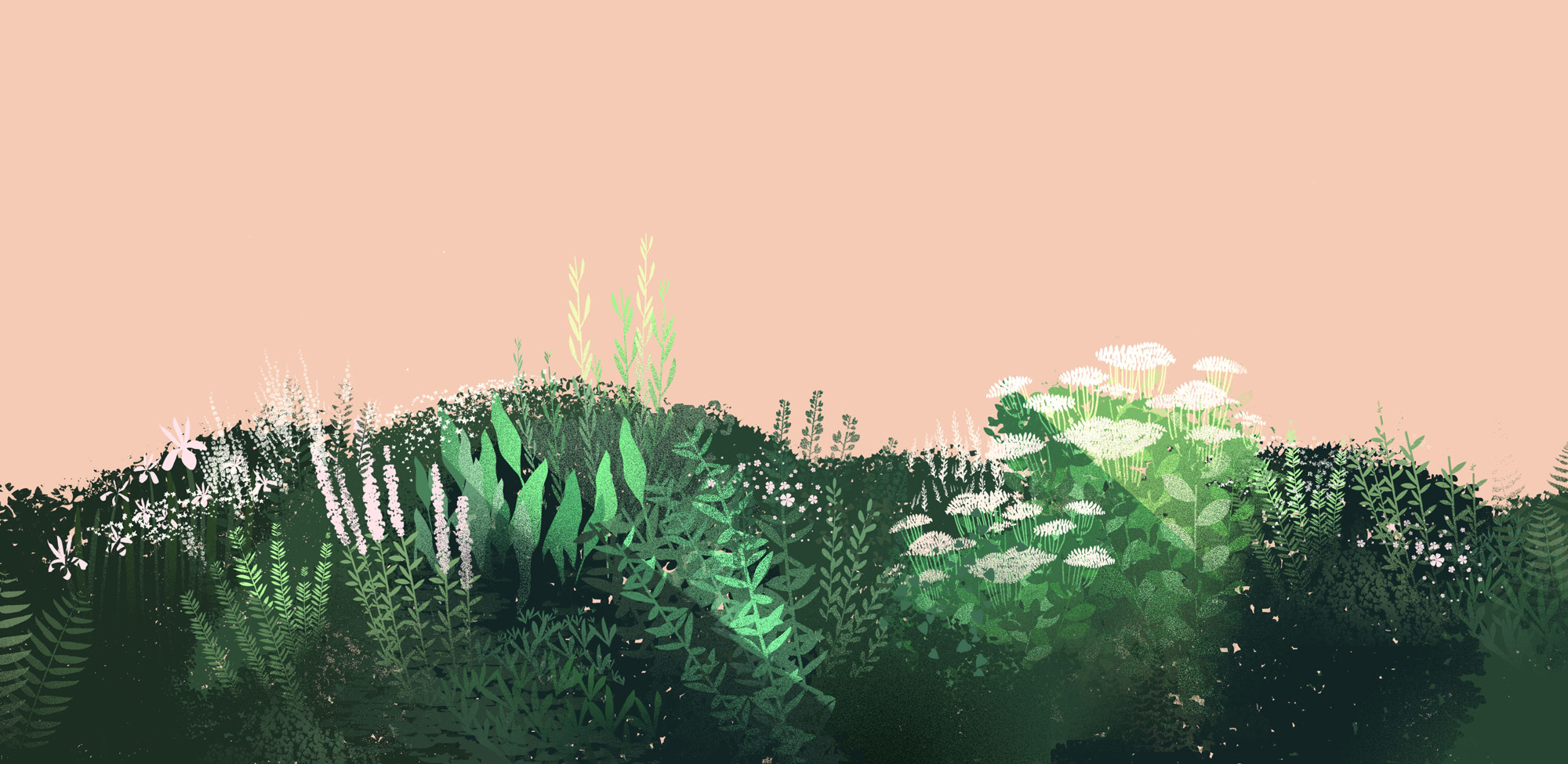
Did switching your major enable you to start making the type of work you wanted? Actually, I feel like what I’ve achieved is because I held a grudge and was a little spiteful. I’m very grateful for my time at Ringling, and I wouldn’t do it differently if given the chance, but I have been able to create my work in spite of a lot of the negativity I experienced there. I’ve moved past it, so it’s more of a footnote now, but it did contribute to how I got started on my path.
If I’ve learned anything, it’s that I don’t do this work for other people. There are other professions better suited for that. I’ve realized that focusing too much on pleasing others is in direct opposition to my internal creative drive.
How did you become involved with the Adobe Creative Residency? Adobe plucked my residency proposal out of the bin right around the time I was preparing to graduate.
What was your focus for the residency? I chose to focus on a digital illustration series, called Before & After, which was inspired by all of the change I witnessed growing up in the Rust Belt. When I went to school and came back everything looked different. Looking at things in increments of time gave me a better understanding of how quickly our surroundings can change, how that affects our us, and how something can be reborn and become stronger after intense periods of upheaval and chaos. They are themes I definitely relate to more now that all the internet craziness of the last couple of months has died down.
“If I’ve learned anything, it’s that I don’t do this work for other people. There are other professions better suited for that. I’ve realized that focusing too much on pleasing others is in direct opposition to my internal creative drive.”
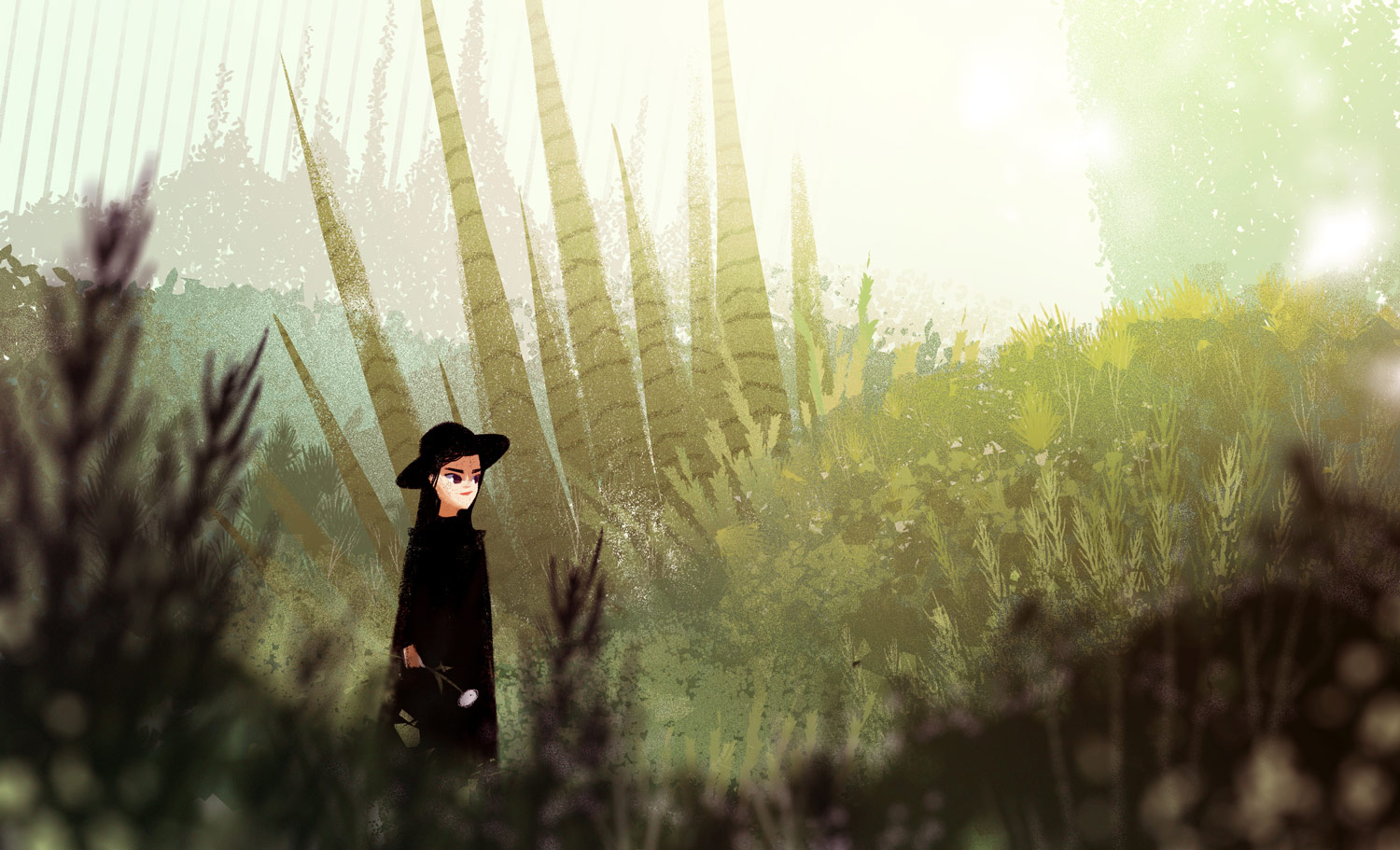
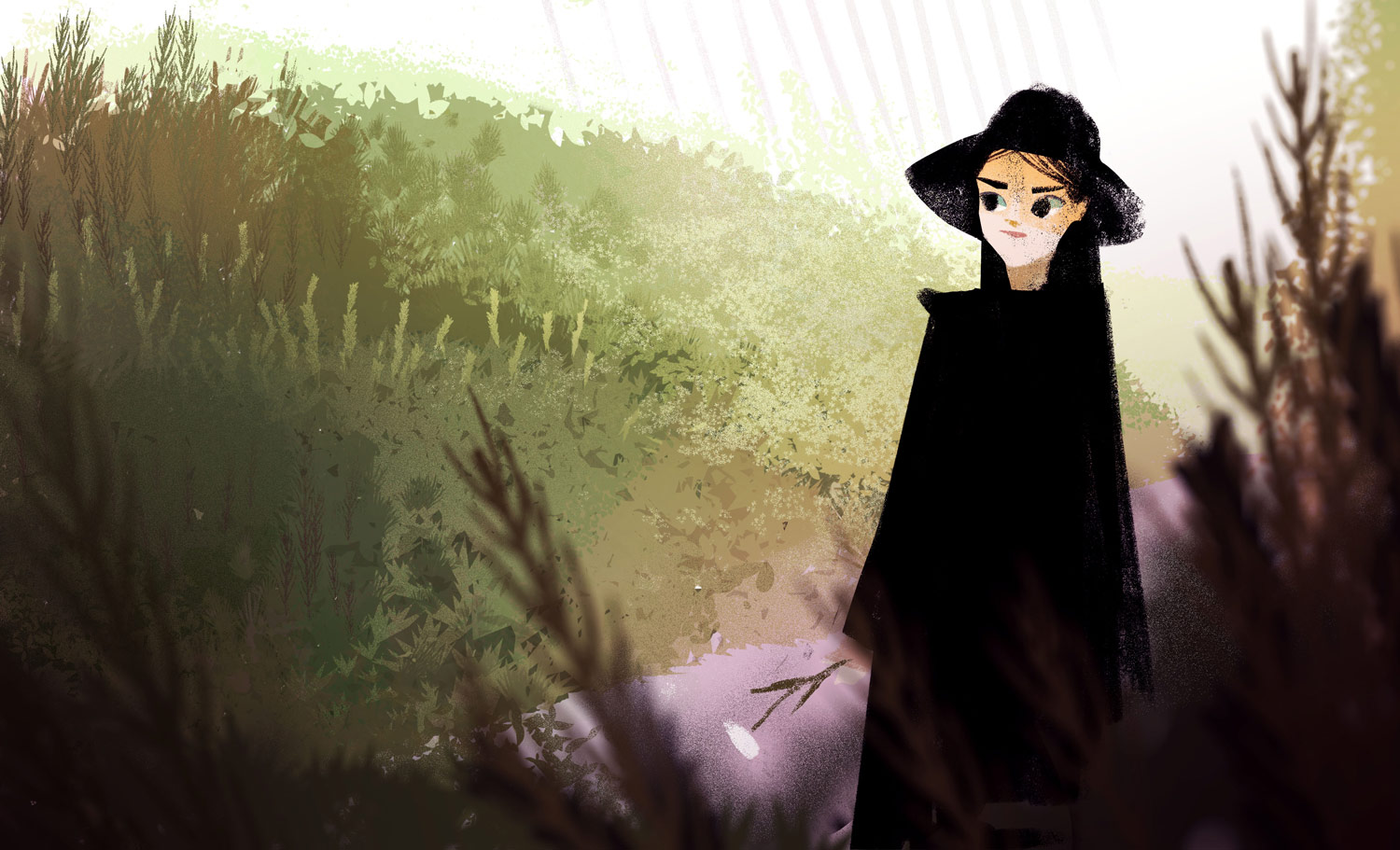
Yeah, I heard you had some work go viral. Will you describe what happened? A few months ago, a drawing I made of a pigeon—or trash dove as I affectionately call them—literally went viral overnight. Since then, a lot has changed for me, mostly in a good way, but I did have some weird experiences along the way.
I’ll start from the beginning. Back in August, I went to Minneapolis to see an art piece I had in a gallery there. Since part of the Adobe Creative Residency is about traveling and making connections, they were nice enough to send me for the show. That Saturday I painted in Loring Park and I saw all these birds around: ducks, cranes, and pigeons. I’d never really thought about pigeons before, but they’re kind of weird—their feathers are iridescent in the sunlight, but they kind of bobble around strangely. They’re pretty, but also kind of dumb. I went back to my hotel and did a five-minute pigeon sketch. I looked at the drawing the next day while I sat in the airport, tweaked it little bit, then tweeted it out to my followers. It was a quick sketch and something I figured nobody would care about.
It ended up becoming my most popular tweet! People loved this silly little pigeon drawing. About a month later, a friend of mine texted me that I should make the pigeons into stickers to sell on the App store. Why not? I created about 25 stickers in the first few days and then made animated versions to go along with the original set. I released them on the App store and saw a lot of sales in the first month.
The stickers were pretty disparate from the rest of the work I had done up until that point. The birds were silly and digestible, whereas most of my other work had been more conceptual. Shortly after that, I attended Adobe MAX and met someone who happened to know the person in charge of stickers for Messenger. When I suggested they use my birds, they contacted me to license them and put the stickers on Facebook at the end of January 2017.
On a morning in mid-February, I woke up and checked my phone. I had received a ton of messages on Facebook, which I thought was weird, since I didn’t use it that often. As I read them, I realized that people in Thailand had been tagging my public art page, which had been all but dead, and it had grown to 500 followers overnight. People tagged me in news articles written entirely in Thai that showed my picture and images of my bird drawings. Thousands of people were sending me videos of themselves and their friends dancing to my animated birds, and all of it had happened while I was sleeping! (laughing) It was so surreal.
“This experience has definitely taught me how fast the internet moves, but also how quickly it moves on after the initial hype dies down. I’ve seen the flip side of virality: marketing teams are always trying to make this happen, but what happened to me is something money can’t buy.”
Oh, wow! Do you know why it become so popular? From what I understand, it’s because of a cultural joke. In Thai culture, to be nok essentially means “to be birded.” It has a similar meaning to the friend zone in the US, where if you have a crush on someone and they don’t return your feelings, then you’re nok—you’re being birded. My pigeons had essentially become a meme representing this idea, which lead to millions of people posting them.
Thailand was really cool about everything. Apparently, their culture puts a lot of emphasis on giving credit to creators, which is awesome, because that isn’t something we respect in America nearly as much. A friend of mine in Thailand told me that I was something of a “net idol” over there: my name and work was just as well-known as the birds themselves. The Thai people immediately sought me out and credited me, turning me into a bit of an internet celebrity for a couple weeks.
That part was really nice, but at one point I accidentally pissed off the entire country. During all the hype, I thought it’d be a nice gesture of appreciation to Thailand to make a drawing of my bird holding the Thai flag. Birds don’t have hands, so I drew a bird holding the flag with its foot—not realizing that the Thai people consider their flag to be almost holy and feet to be extremely unclean! After I posted it, I started receiving messages like, “How dare you? Why would you do this? This is so offensive!” But I also received other messages saying, “Hey, we understand that you’re a foreigner, and we appreciate your drawing,” and they explained to me why it was offensive. I didn’t intend for it to be taken that way, so I made a new drawing with the bird holding the Thai flag in it’s beak as an apology, which seemed to clear up the misunderstanding.
Over time, the birds spread to other Asian countries, primarily Taiwan and the Philippines; then it jumped to Europe; and then it started showing up in South America. Unfortunately, things started going downhill once it hit English-speaking countries and I started receiving online harassment. I’m sure there was a lot of that going on in other countries too, but in languages I couldn’t read. At one point, I even started getting death threats that I had to report to the police.
So, a little backstory: I’m a creative streamer on Twitch, an online platform for video streaming. It’s primarily for gaming, but there’s an ever-growing community of creatives on Twitch Creative. Basically, what I do every day is sit down at my desk, point a camera on my face, and livestream whatever I’d doing. People can watch me paint in Photoshop and will hang out with me for anywhere from two to seven hours a day.
For the most part, I’m a homebody who is pretty set in this routine of streaming on an almost daily basis and going about my life—I don’t like too much attention outside of that. When all this hype around the birds started happening, I probably had about 50,000 new followers across my different social media platforms, not all of whom had good intentions. There was a point when someone doxed me while I was streaming: they came into my channel and followed me with an account that listed my home address. Then I started receiving weird, unlabeled phone calls, which meant people had somehow gotten my phone number as well. All of a sudden, I was scrambling to hide all my personal information online. I realized there were probably a lot of people looking at me now, and that it only takes one crazy person to do something, so I locked down all my domains and got a VPN. That was the start of it.
This experience has definitely taught me how fast the internet moves, but also how quickly it moves on after the initial hype dies down. I’ve seen the flip side of virality: marketing teams are always trying to make this happen, but what happened to me is something money can’t buy.
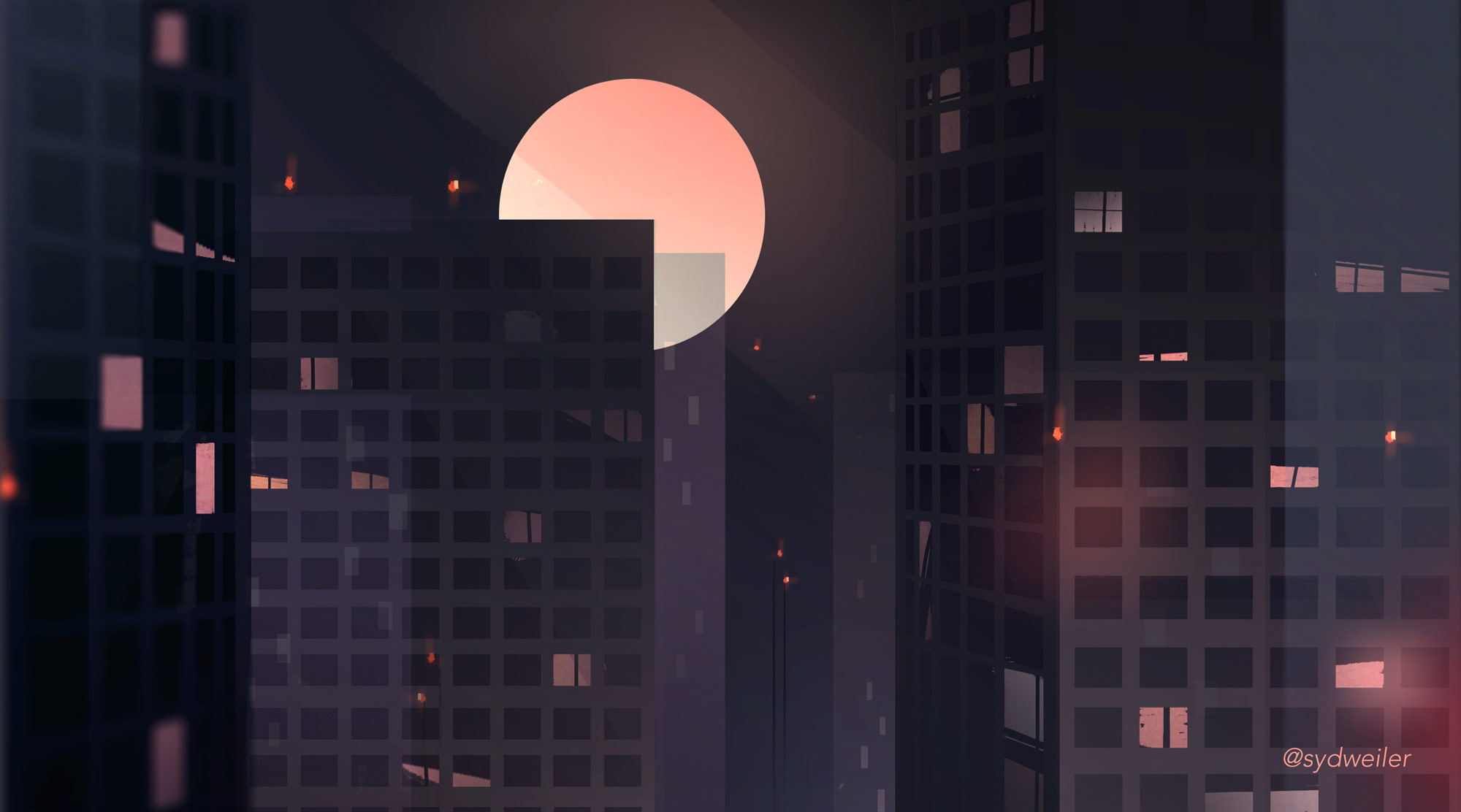
What have you been working on lately now that the dust has settled? Unfortunately, I’m still dealing with mass infringement from people and companies stealing my work to create hundreds—what used to be thousands—of bootleg t-shirts, apps, stickers, games, and advertisements. Even Tic Tac ripped me off: they put one of my gifs into their own gif and ran it as a promoted ad on Facebook! So now I get to cease-and-desist Tic Tac. Amazon alone carried upwards of 800 bootleg t-shirts on their site, and a lot of European companies have stolen my work because they’re more lax about copyright law over there. I’m taking that stuff down little by little, one or two sites a night if I can manage it, but it’s mentally taxing.
Fortunately, I hired a lawyer pretty early on and have learned a lot about intellectual property and copyright laws since everything started. I also learned a lot from my friends and colleagues who have been through similar situations.
It helps to be able to talk to others who’ve experienced what you’re going through. Yeah, a lot of people who’d experienced what I was going through reached out to help at a point when I felt like I’d fallen into a hole. My community manager on Twitch teamed up with one of my good friends in Orlando and together they compiled all the URLs of illegal merchandise into a Google Doc for me, line by line, so that when I got around the DMCA-ing everything, I could just copy and paste. They have literally saved me hours!
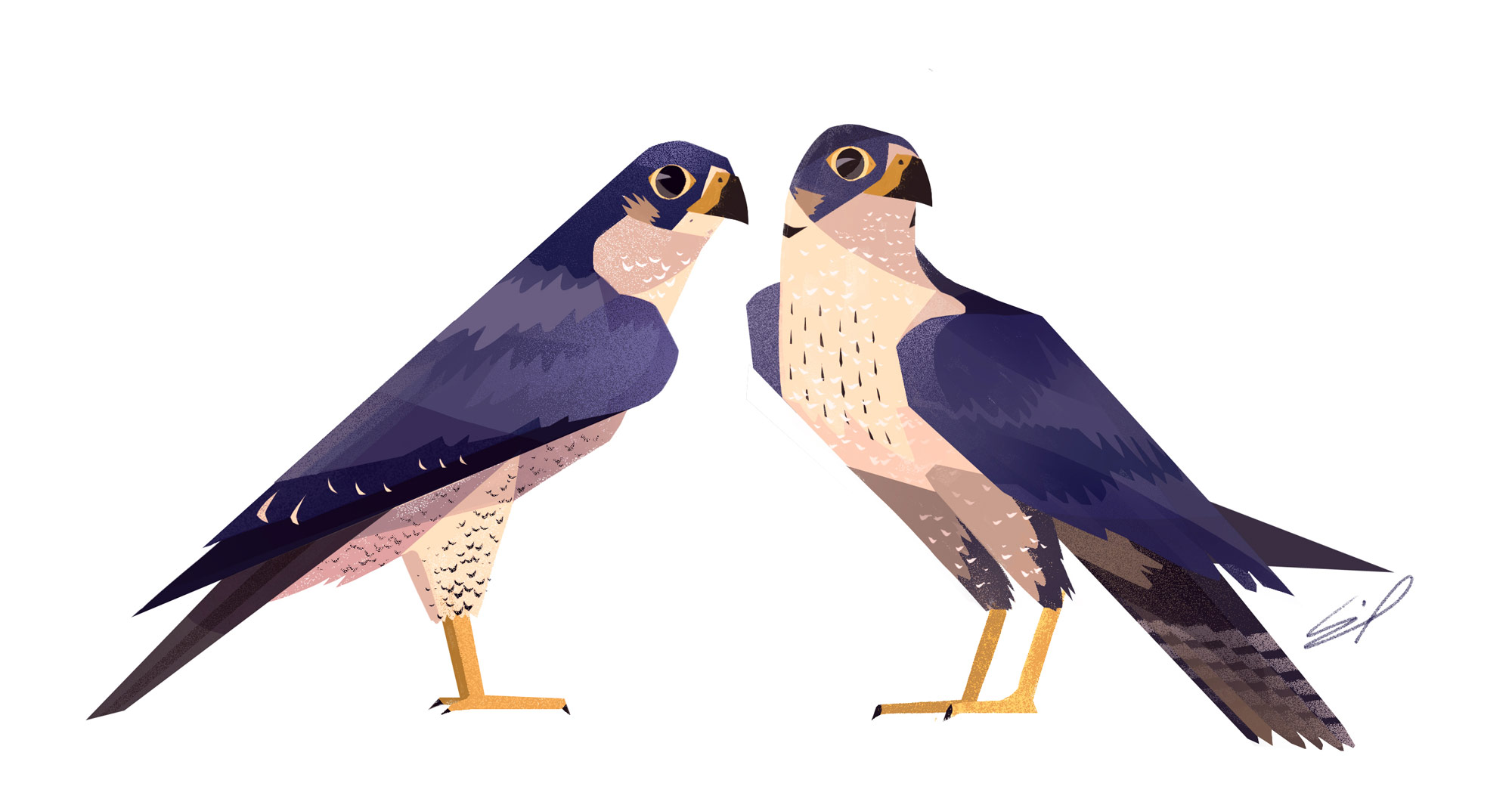
“I predict that streaming will be the next big thing within the creative industry, especially for people who have paid subscribers.”
It sounds like you got a crash course in copyright law. Yeah, I did. I’ve been meaning to start an LLC, but I had to do it immediately in order to file my trademark under it. I’m still trying to set up my business, get my financials in order, and figure out what licenses and forms I need to file. I’ve been spending a lot of time talking to accountants. There is so much you don’t know you need until you need it. (laughing)
I want to be clear, though: the positive attention I’ve received has been enormous! People love the birds, and my work has brought a lot of people a lot of happiness, which is the intention. I’ve seen hundreds of pieces of fan art and cosplay—not only of the birds, but of me, too. I don’t want people reading this to think, “Oh my god, I shouldn’t ever share my work online because look at all the horrible things that can happen.” I want people to know that the positive has almost entirely cancelled out the negative. For that, it was worth it.
What are your goals for the future? My main focus will be on continuing to build a positive creative community on Twitch. To me, Twitch feels like YouTube did 10 years ago before people started making their careers on it. And I predict that streaming will be the next big thing within the creative industry, especially for people who have paid subscribers.
Twitch might even be a strong competitor for art schools in the future. There are anywhere between 100 to 250 people watching my stream at any given time who can come in to get critiques of their work, ask questions, and learn new techniques. And if they have a question I can’t answer, someone else in the community can. I’m working to create a pocket within Twitch Creative for positivity, productivity, and self-improvement. We all help each other on a day-to-day basis and inspire one another to follow our larger aspirations for our careers. Continuing to build that type of community is incredibly important to me.
In a year or so, I’d like to get to a point where my streaming will be paying me a salary so that I can sustain myself and work on building up the brand for the birds. I now have a character with a fanbase that I would compare to Pusheen or Grumpy Cat. I’ve seen a huge boost in sales of stickers on the iOS store, which is pretty much funding my whole operation, so now I’m merchandising, looking into online retailers, working on licensing to a couple outlets in Asia, and in talks to make a mobile game.
After the Adobe Creative Residency, I’ll be going back to freelancing, so it’d be pretty ideal if I could more or less live off of the brand I’ve been building. I’m very fortunate for the attention all the birds have received, and I’m attempting to use that momentum on projects I have planned for the future. I think it will do well if I continue to put the time and effort into it.
